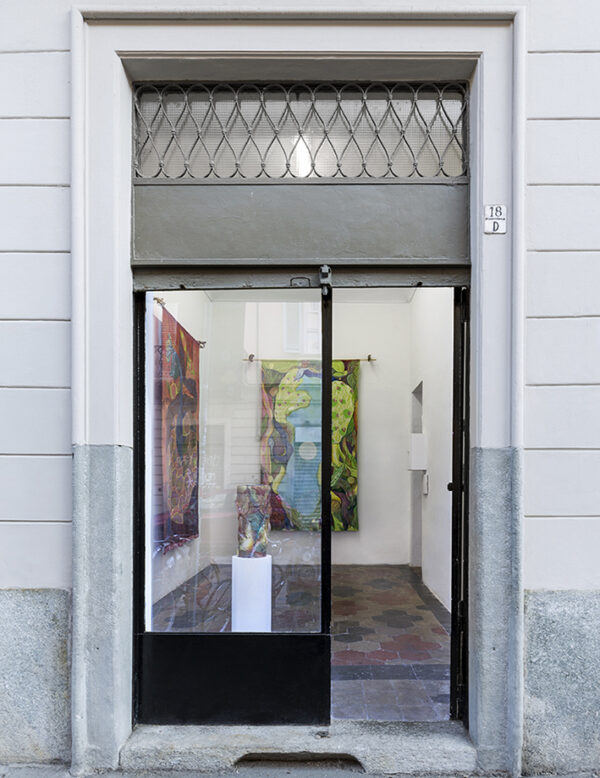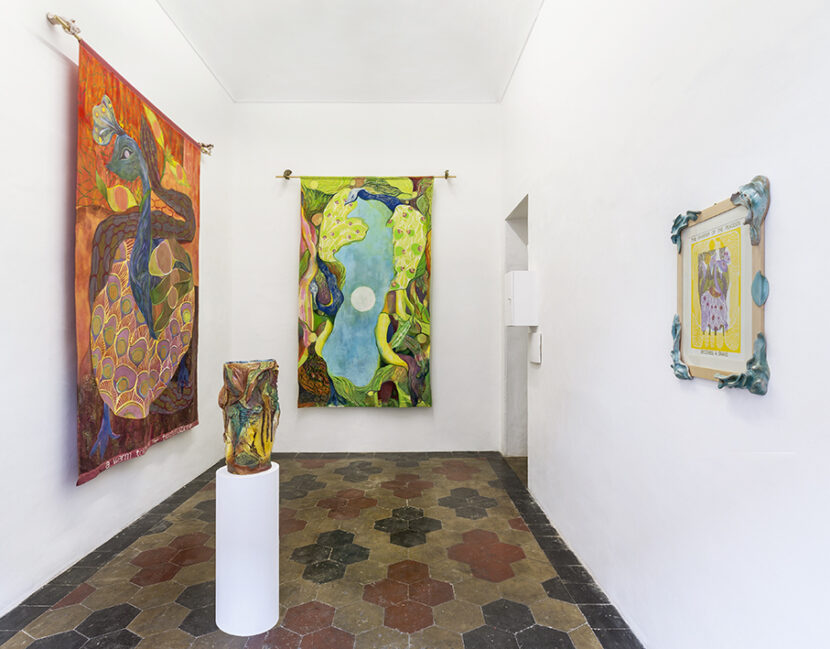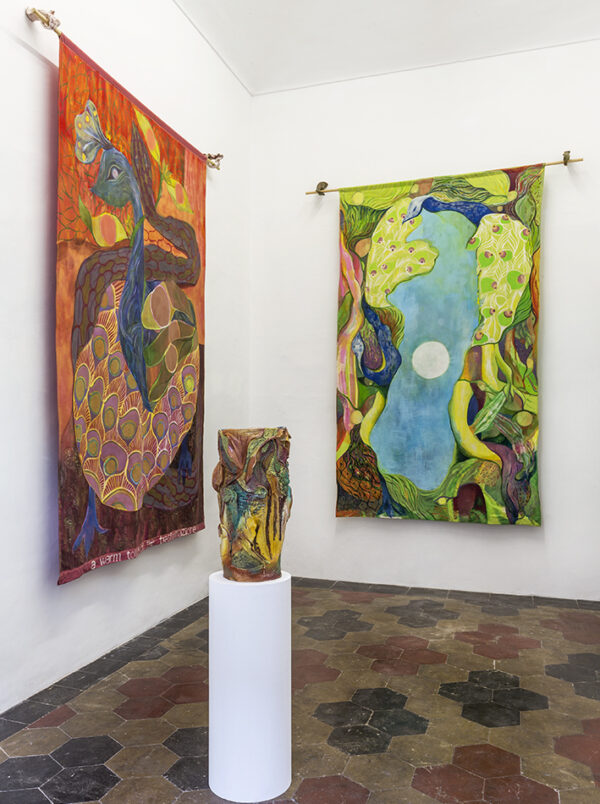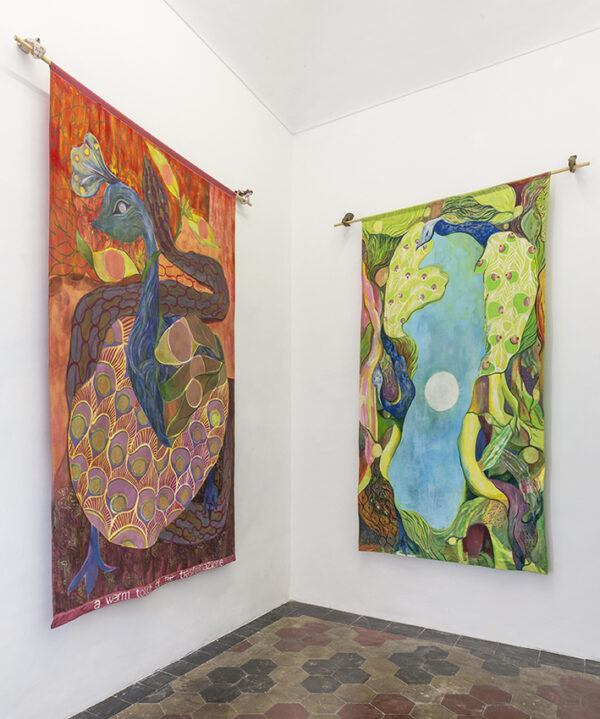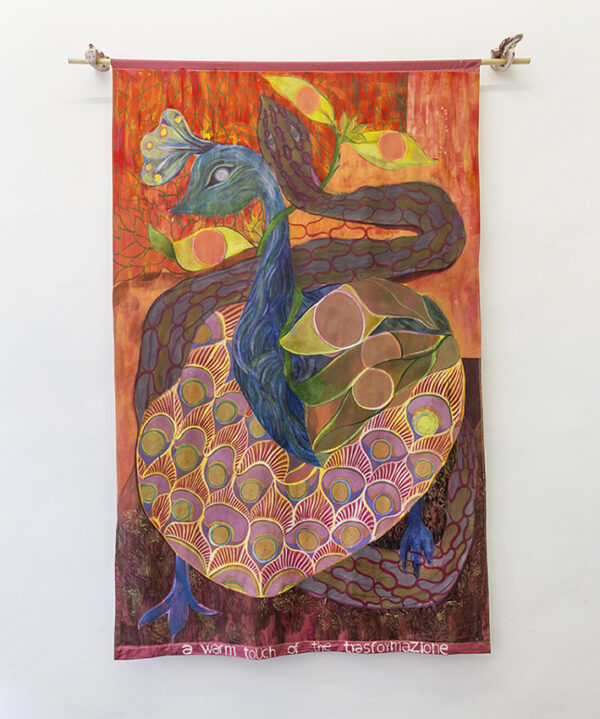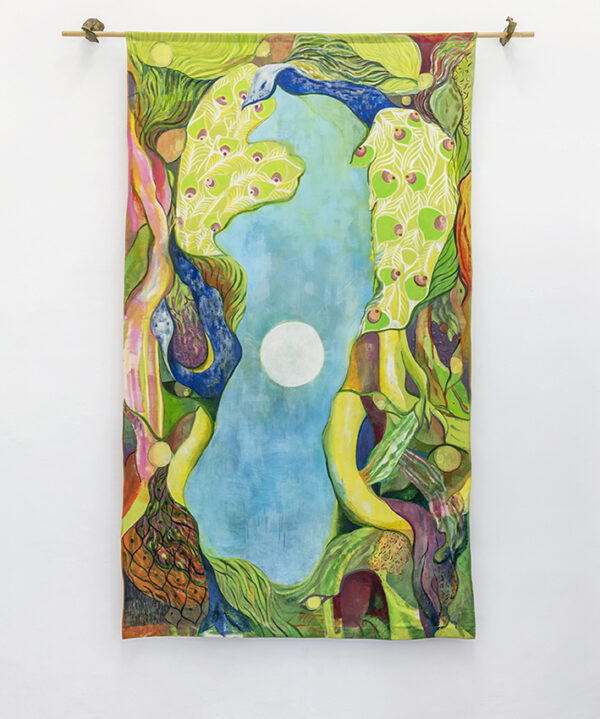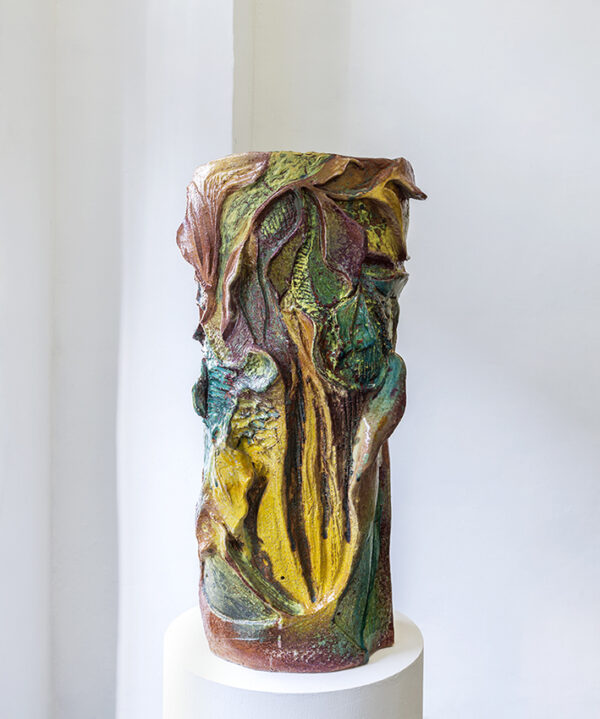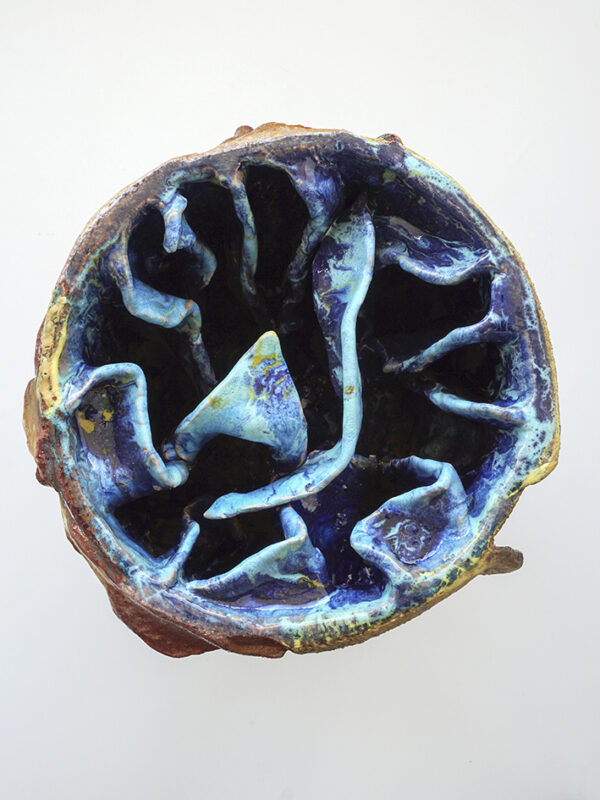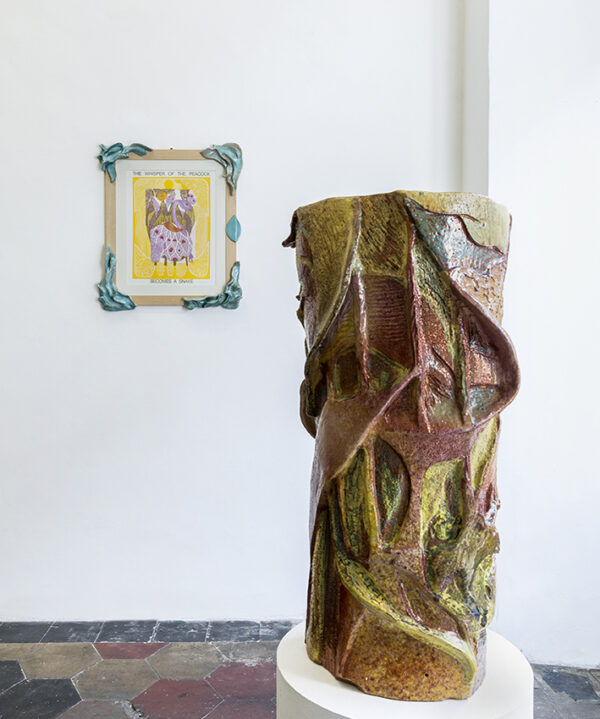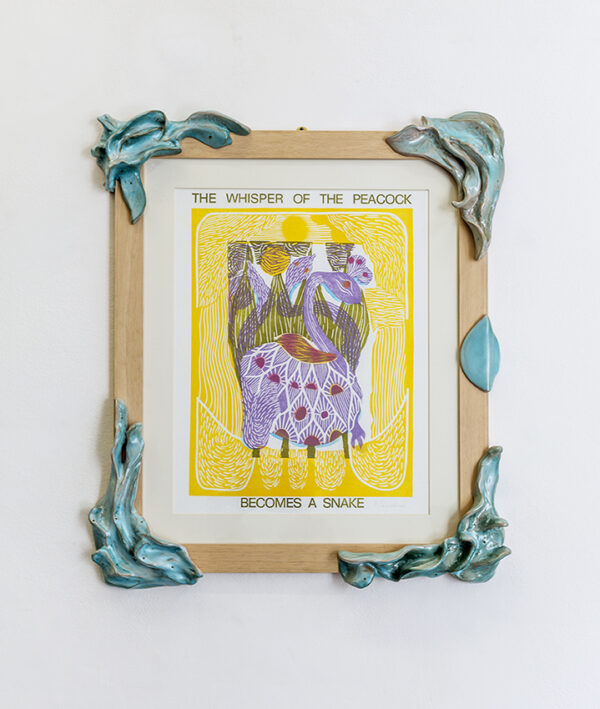The whisper of the peacock becomes a snake
Quartz Studio, Turin
September 12 – October 22, 2022
Ph Beppe Giardina
Review:
Segno magazine online Click
Exibart online M.C. Strati Click
Atpdiary G.A. Arnesano Click
Artribune F.M. Giallombardo Click
Quartz Studio is pleased to present The whisper of the peacock becomes a snake, the first solo show in Turin by Alessandro Roma with a critical text by Irina Zucca Alessandrelli.
I remember my childhood names for grasses and secret flowers. I remember where a toad may live and what times the birds awaken in the summer – and what trees and seasons smelled like.
John Steinbeck, East of Eden (1952)
Alessandro Roma’s solo show invites us to get lost to find ourselves again, an ode to reverie in lush, alive nature. The plant world is in deep symbiosis with the animal world, appearing as if one, welcoming visitors and guiding them with a peacock feather towards a floral imaginary. The entire show consists of two large canvases, one ceramic piece, and a woodcut print, focusing on forms that mutate from amphibians to birds and back again. The frameless canvases offer up a kind of ouroboros, a snake that transforms and engulfs a peacock, the symbol of eternal life, which is recreated in a beguiling cosmogony of purple and green hues. The two canvases are hung like Renaissance tapestries, seeming to be part of a single world, only temporarily split in two. The print is a woodcut from three plates engraved on linoleum, and the ceramic piece (which it would be reductive to call a vase) are completely consistent with the pictorial scene from which they seem to emerge. The print, in which lemon yellow and dark purple dominate, framed on wood and colored ceramic, suggests the aesthetics of German avant-garde movements of the early 20th century but in a softer version with delicate curved features. The ceramic is a powerful sculpture with the same color foundations as the other works but in softened, more muted tones. Like a trunk wrapped by large leaves and flowers, this sculpture rises on a circular base. Jagged indigo bushes emerge from inside that invite touch with their smooth, glittering outside rainbow shell. Subtle elegance and harmony of the sense reigns, bringing to the mind the scent of fresh flowering woods, gently rippled by the wind. This synesthetic composition evokes a world of fully expressed artistic values, including the love for artisan techniques and manual savoir faire that understands the grain of the paper, the effect of tempera on rough canvas, and that of glaze on milky ceramic. Roma uses techniques that echo forgotten, much-coveted skills that recreate for the eye to the viewers the pleasure of the hand that shapes, paints, and engraves. Looking at these works, we can sense the rustle of the peacock moving between the branches and glimpse the reflections of light between the boughs, perceiving the spiritual unity of creation of which the artist grasps the essence.
IT
Ricordo i nomi che da bambino davo alle erbe e ai fiori nascosti. Ricordo dove si trova il rospo e a che ora si svegliano d’estate gli uccelli e l’odore degli alberi e delle stagioni.
John Steinbeck, La valle dell’Eden (1952)
La personale di Alessandro Roma è un invito a smarrirsi per ritrovarsi, un inno alla rêverie in una natura sinuosa e animata. Un mondo vegetale in profonda simbiosi con quello animale, tanto da apparire inscindibile, accoglie il visitatore e lo avvia verso un immaginario floreale con piume di pavone. L’intera mostra, che si compone di due grandi tele, una ceramica e una stampa xilografica, si sofferma su forme mutanti da anfibi a volatili e viceversa. Le tele senza telaio presentano una sorta di uroboro, un serpente che si trasforma, inglobando un pavone, simbolo di vita eterna, che si crea continuamente in una cosmogonia seducente dalle tinte violacee e verdastre. Le due tele sono appese come antichi arazzi rinascimentali che sembrano far parte di un unico mondo, solo momentaneamente diviso in due. La stampa, una xilografia eseguita a mano da tre lastre incise su linoleum, e l’opera in ceramica, che sarebbe riduttivo definire vaso, sono del tutto coerenti con lo scenario pittorico da cui sembrano scaturire. La stampa, in cui predominano i toni del giallo limone e del viola scuro, incorniciata su legno e ceramica colorata rimanda all’estetica delle avanguardie tedesche di inizio secolo scorso, ma in versione più morbida dai tratti curvilinei delicati. La ceramica è un’imponente scultura dagli stessi riferimenti cromatici delle altre opere ma in tono sfumato, più tenue. Come un tronco avviluppato da grandi foglie e fiori, questa scultura si staglia su un plinto circolare. Dal suo interno emergono frastagliati arbusti indaco che solleticano il tatto, tanto sono lisci e scintillanti nella loro corazza esterna arcobaleno. Su tutto regna una tale soave eleganza e armonia dei sensi da rimandare la mente al profumo di fresche selve fiorite, leggermente increspate dal vento. Questa sinestetica composizione richiama un mondo di valori artistici reclamati a gran voce: l’amore per le tecniche artigianali e il sapere fare manuale che conosce la grana della carta e l’effetto della tempera sulla tela grezza e quello dello smalto sulla ceramica lattiginosa. Le tecniche usate da Alessandro Roma riecheggiano saperi dimenticati e tanto auspicabili per restituire all’occhio di chi guarda il godimento della mano che modella, dipinge e incide. Di fronte a questi lavori si percepisce il frusciare di un pavone tra i rami e si scorgono riverberi di luce tra le frasche, respirando la spirituale unità del creato di cui l’artista coglie l’essenza.

